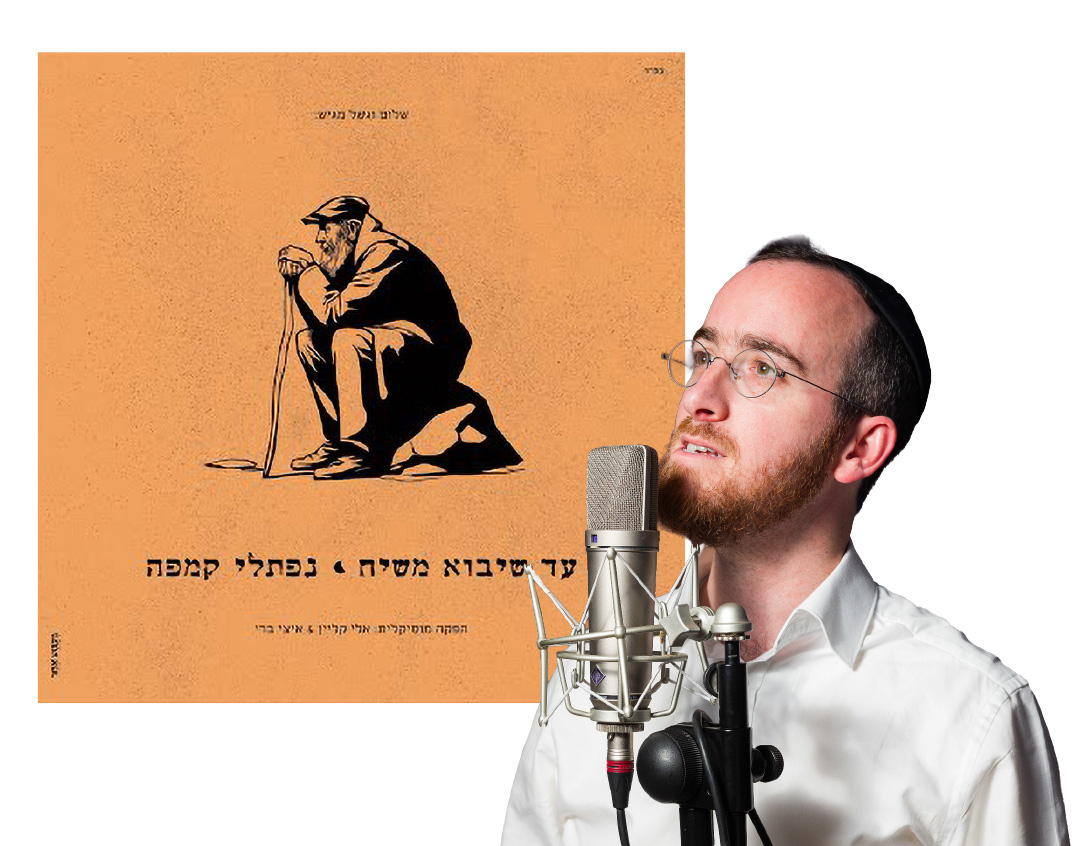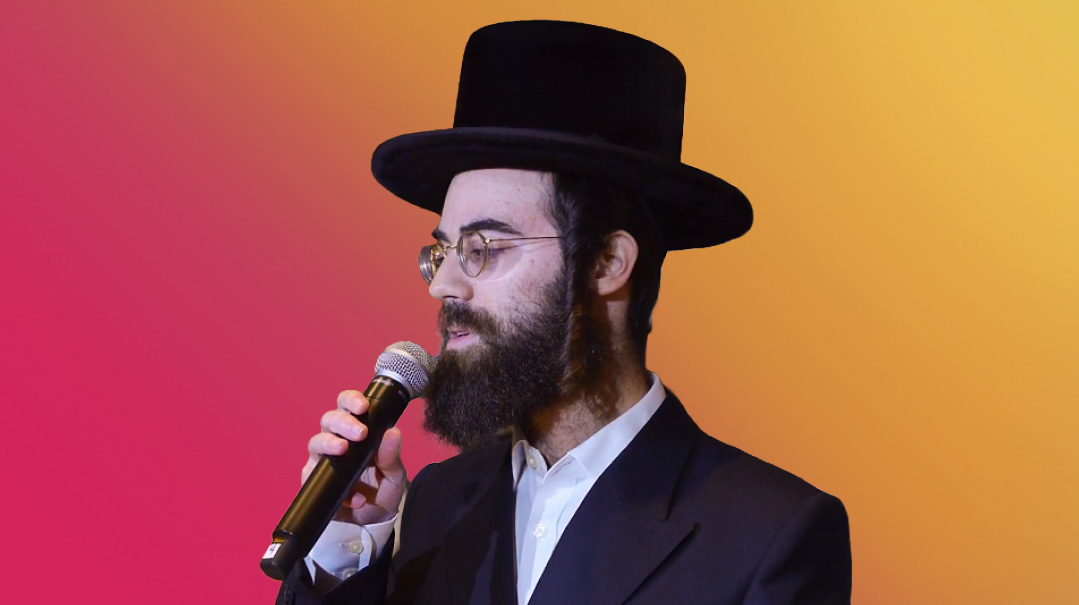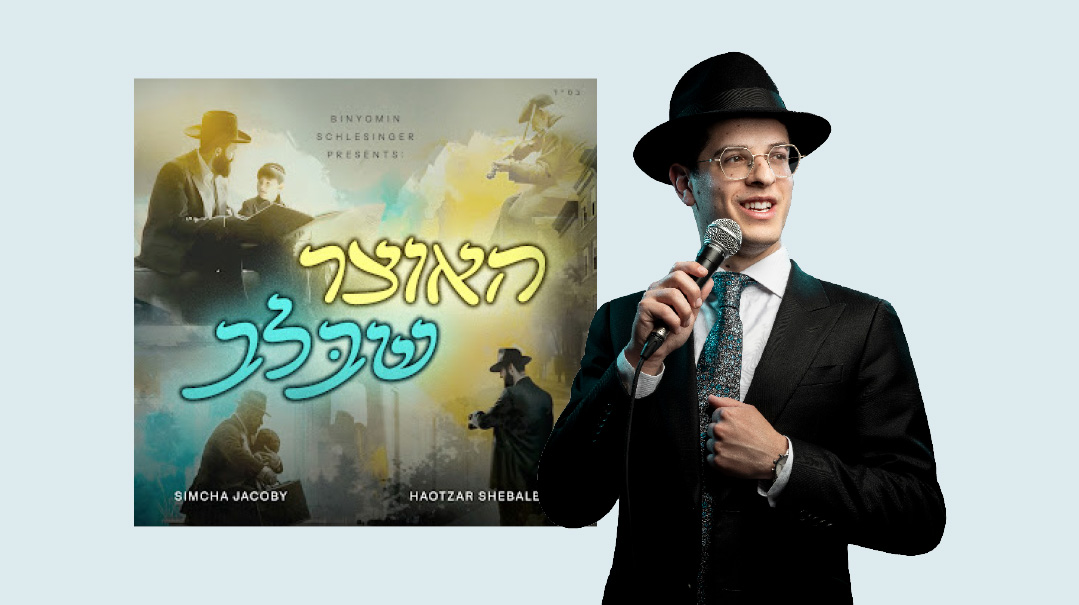Just Out: Be the Best Example
| June 20, 2023“...they’re waiting for you to stand/’Cuz everyone’s a dugma, step up you’re a dugma,” the lyrics call

“This generation hears a lot about ‘influencers,’ but maybe not enough about how much we can all be influencers to those close to us,” says ELI MARCUS, whose new album, DUGMA, hit the shelves last week. He hopes that the title track will serve as a reminder of the power each of us has to be an example and an inspiration for others.
“You’ve got a trail to blaze, a path to pave… they’re waiting for you to stand/’Cuz everyone’s a dugma, step up you’re a dugma,” the lyrics call, echoing a profound message from the Lubavitcher Rebbe in a letter to bas-mitzvah girls, urging each one to realize that she can be “the dugma [example] of a bas Yisrael to all her friends.” In today’s confusing world, Eli, a Chabad chassid, was determined to put out the message that when we make an extra effort to do the right thing, we become an often-unwitting example for those around us, inspiring our friends and families in ways we can’t even imagine.
For a singer who’s on the stage at weddings night after night, finding the time and the focus to work on a full-length album was no easy feat. Eli and his producer, Tzvi Blumenfeld, have been working on Dugma for over a year and a half. “I was sitting in the studio with Yitzy Waldner when he composed the first song, ‘Hashem Sefasai Tiftach,’ just after Succos last year, and we’ve been in the process since then,” Eli says. “There are so many decisions that had to be made, both creative and financial, and it was challenging to focus on those while running from wedding to wedding and traveling.”
There were periods when Eli or Tzvi were too busy and had to check out of the album project for weeks at a time. But days off found Eli hard at work in a Lakewood studio, working to gather the songs, commission and fine-tune arrangements, and record. Two of the songs, “Geshem” — a moving tune for the Prayer for Rain — and “Im al HaMelech Tov,” are his own compositions.
Well-known artists join newer names on this album, Eli’s fourth, and the songs are richly varied, from pumping to meditative, in Lashon Kodesh, Ivrit, and English. He says he’s especially excited by the sound of “Shevach,” arranged by Naor Karmi (with words from Shabbos morning davening), and by Mendy Portnoy’s simple but stirring arrangement for “Mah Od,” a prayer for Hashem’s blessing to our children, with original Hebrew lyrics.
Every song has its time, and he can attest to that with the final recording of “Im Yehudi” (a sort of spinoff on Adi Ran’s “Sameach Verokeid” — “If a Yid knew how much Hashem loves him, he’d dance straight for 120 years…”). Eli and Tzvi both thought the new song had potential, but didn’t think the chord structure clinched it. “We tried to rewrite the chords, and it sat around for about about six months until we were happy with the results,” Eli says.
There were a few other things that surprised him as well. After spending several hours in the studio singing the fourth track, “Hashem Oz,” the arrangement was to modulate the key and sing the last third of the song one key higher. But then, both Tzvi and Eli decided that the higher version sounded much better all around, and decided to rerecord the entire song on that key, which meant another three hours of singing for Eli. Luckily, he says, it’s a labor of love. “The actual singing, including the harmonies and counter-harmonies and backup vocals, which I often do myself, is the part I enjoy and connect to most.” He says his voice is almost always ready to roll, thanks to professional training. Still, when vocal fatigue occasionally sets in, although studio technology can help improve things, sometimes there’s nothing to do but call it a day and wait it out.
Whenever Inspiration Strikes
“Sometimes a song is so much more than a song. A few years ago, I was approached by two Yidden whose rebbe wanted to publicize what he considered the little-known burial place of Dovid Hamelech [there is much speculation, based on the clear statements of Tanach itself, that Dovid Hamelech was not buried in “King David’s Tomb” on Mount Zion, but rather in Ir David – Ed.]. They wanted me to connect them with philanthropists who could help them accomplish this. Although I couldn’t help them in that way, if there was something else I could do, I’d be happy to help them. It was right afterward that Reb Cheskie Weiss asked me to record the song he’d written about Dovid Hamelech and Sefer Tehillim — “Lomir tzinden a lechtele far di Melech Duvid (Let’s light a candle in honor of Dovid Hamelech),” so I felt that was my small contribution.”
—Beri Weber
Story Behind the Song
A Niggun Shared
ELI GERSTNER says he started writing songs as a teenager, but he lacked the confidence to share them with others. “The first time I shared a song with a group was because of my 12th-grade rebbi, Rabbi Yitzchok Shain,” says the singer, songwriter and producer. “We used to go to his house for a tish every Friday night after the seudah, and of course, we’d sing. The big song back when Rabbi Shain was a Lakewood talmid was Carlebach’s ‘Lulai Sorascha,’ and he’d ask us to sing that. But it didn’t really gather momentum — it would peter out after one round.”
Since Rabbi Shain wanted his students to connect with the words, and he knew Eli could compose, he asked his talmid to write a new melody for “Lulai Sorascha.”
“When I taught that song to my class at the tish, I was so nervous — it was the first time others sang one of my songs together with me,” Eli remembers. “That was in 1997, and after a while, I forgot about the song. Thirteen years later, I dug it out, and it was released on Shma Yisroel Volume II of the Menucha album series.”
From One Soul to Another
For a few months after the release of JOEY NEWCOMB’s first album, he just couldn’t write any more songs — for him, the game had changed. While his niggunim had originally been an outgrowth of his emotions and experiences, emerging spontaneously straight from the heart, those spontaneous feelings were now needed to sell an album. But with time, the wellsprings reopened, and the songs came back, although Joey still doesn’t sit down to write formally. “I’ve written songs in every city I’ve traveled to, inspired by and connected to the events and experiences in those places. None of them were written to be released on an album, but all of them were written to be sung,” he says.
Of the dozens of voice notes with new songs, Joey and his producer Doni Gross choose what they feel would work best on an album. “Working with Joey has something organic about it,” Doni says. “For some songs, we go with a folk-style feel, and in others, we’ve blended parts of his original phone recordings into the arrangement. It’s pretty unusual to change tempo in the middle of a track, but when working with Joey, we sometimes change the tempo up to 15 times, because that’s what he does live. In some songs, I push the recording faster in order to capture the ‘Joey Live’ feel. The music comes from his soul, and that’s why it enters the soul.”
(Originally featured in Mishpacha, Issue 966)
Oops! We could not locate your form.







